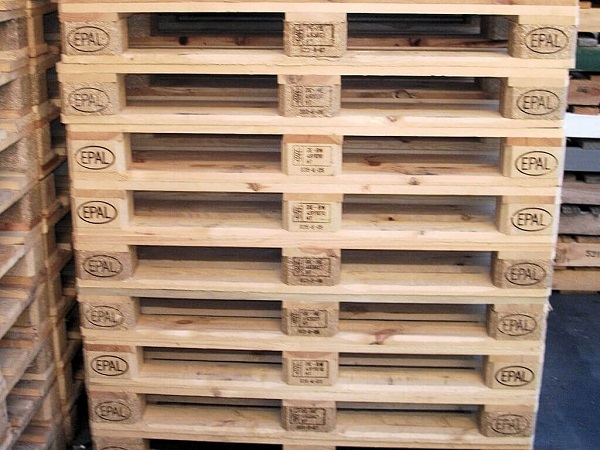Shipping and storage pallets
Shipping and Storage Pallets: A Comprehensive Guide

Shipping and storage pallets are fundamental components of modern supply chains, playing a crucial role in the efficient handling, transportation, and warehousing of goods.
From manufacturing plants to distribution centers and retail stores, pallets facilitate the seamless movement of products, minimizing manual labor, maximizing space utilization, and streamlining logistical operations.
This comprehensive guide explores the diverse world of shipping and storage pallets, covering their history, types, materials, construction, applications, industry standards, and the considerations for choosing the right pallet for specific needs.
What are Shipping and Storage Pallets?
Shipping and storage pallets are flat, sturdy platforms designed to support and stabilize goods during handling, storage, and transportation.
They act as load-bearing units, allowing for easy movement of materials using forklifts, pallet jacks, and other handling equipment.
Their robust construction enables them to withstand heavy loads and repeated cycles of use, ensuring the safe and efficient movement of goods throughout the supply chain.
Historical Perspective
The concept of pallets dates back to ancient civilizations, where rudimentary platforms were used to move heavy objects. However, the modern pallet emerged during the early 20th century with the advent of mechanized material handling systems.
The need for standardized platforms to optimize efficiency in warehousing and transportation led to the development of the first standardized pallet designs. The evolution of pallets has continued since then, driven by advancements in materials, manufacturing processes, and industry standards.
Types of Pallets
Pallets come in a wide variety of types, each designed to meet specific requirements in terms of load capacity, durability, and compatibility with handling equipment.
The most common types include:
1. Stringer Pallets:
Stringer pallets are constructed using a series of stringers (wooden slats or beams) that run lengthwise between the deck boards.
They are widely used for general-purpose applications and offer a good balance of strength and affordability.
Advantages: Relatively low cost, easy to repair, readily available.
Disadvantages: Prone to damage from moisture and pests, may require fumigation for international shipping.
Applications: General warehousing, storage, and transportation of various goods.
2. Block Pallets:
Block pallets employ a more robust construction using blocks or stringers that are interconnected to form a rigid structure.
They are known for their high load capacity and durability.
Advantages: Exceptional strength and durability, suitable for heavy loads.
Disadvantages: Relatively higher cost compared to stringer pallets, can be challenging to repair.
Applications: Heavy-duty applications, transporting heavy machinery and equipment, warehousing of large and bulky items.
3. Pallet Racks:
Pallet racks are sturdy metal structures designed to support and store pallets in a vertical stacking configuration.
They maximize warehouse space utilization and facilitate efficient order picking and inventory management.
Advantages: Optimizes warehouse space, improves order fulfillment speed, and facilitates inventory control.
Disadvantages: Requires significant investment in infrastructure, and needs proper planning and design.
Applications: Warehousing, distribution centers, manufacturing facilities, retail stores.
4. Plastic Pallets:
Plastic pallets are manufactured from high-density polyethylene (HDPE) or other durable plastics.
They offer excellent resistance to moisture, chemicals, and pests.
Advantages: Durable, lightweight, recyclable, hygienic, resistant to moisture and chemicals.
Disadvantages: Can be more expensive than wooden pallets, may not be as strong as wood or metal.
Applications: Food and beverage industry, pharmaceuticals, chemical manufacturing, cold storage environments.
5. Metal Pallets:
Metal pallets are constructed from steel or aluminum, offering exceptional strength and durability.
They are ideal for demanding applications with heavy loads and harsh environments.
Advantages: Extremely durable, resistant to harsh conditions, high load capacity, long lifespan.
Disadvantages: Relatively heavy, can be prone to corrosion, expensive.
Applications: Automotive industry, aerospace, heavy manufacturing, hazardous materials handling.
Materials Used in Pallet Construction
The choice of material for pallet construction significantly impacts its performance, durability, and suitability for specific applications.
Common materials include:
Wood:
Traditionally the most common material, wood pallets offer a good balance of strength and affordability. However, they are susceptible to moisture, and pests, and require fumigation for international trade.
Plastic:
Plastic pallets are increasingly popular due to their durability, hygiene, and resistance to moisture and chemicals. They are ideal for food and beverage industries and applications requiring sanitation.
Metal:
Metal pallets, typically made from steel or aluminum, offer the highest strength and durability. They are suitable for heavy-duty applications and harsh environments.
Composite Materials:
Composite pallets are made from a blend of materials, such as wood and plastic, offering a combination of strength, durability, and sustainability.
Pallet Construction and Design
The construction and design of a pallet play a significant role in its overall performance and load capacity.
Key aspects of pallet design include:
Deck Boards:
The deck boards form the top surface of the pallet, supporting the load being transported. The material and thickness of the deck boards determine the load capacity of the pallet.
Stringers/Blocks:
These structural components provide support for the deck boards and distribute the load evenly across the pallet.
Bottom Boards:
The bottom boards form the base of the pallet and provide stability during handling and transport.
Skids/Runners:
These structural elements provide stability and facilitate the movement of the pallet using forklifts and pallet jacks.
Industry Standards and Regulations
The pallet industry adheres to various standards and regulations to ensure interoperability and safety.
Some important standards include:
ISO Standards: International Organization for Standardization (ISO) standards provide guidelines for pallet dimensions, construction, and material requirements.
GS1 Standards: GS1 standards focus on the identification and tracking of pallets using barcodes and electronic data capture technologies.
Regional and National Standards: Various countries and regions may have their specific standards and regulations governing pallet design and use.
Applications of Shipping and Storage Pallets
Shipping and storage pallets find widespread applications across a diverse range of industries:
Manufacturing:
Pallets are used to move work-in-progress materials, components, and finished goods within manufacturing facilities.
Warehousing and Distribution:
Pallets are essential for storing and transporting goods in warehouses and distribution centers, optimizing space utilization, and streamlining logistics.
Retail and E-commerce:
Pallets play a critical role in the supply chain of retail and e-commerce businesses, moving products from distribution centers to retail stores and facilitating efficient order fulfillment.
Food and Beverage:
Due to their hygienic properties, plastic pallets are widely used in the food and beverage industry for transporting and storing food products.
Pharmaceuticals:
Pallets are essential for transporting and storing pharmaceuticals, adhering to strict hygiene and safety standards.
Chemicals and Hazardous Materials:
Metal pallets are often used for the transportation and storage of hazardous materials to ensure safety and compliance with regulations.
Factors to Consider When Choosing a Pallet
Selecting the appropriate pallet for specific needs requires careful consideration of several factors:
- Load Capacity: The maximum weight a pallet can safely support is a crucial consideration, determined by the pallet’s material, construction, and design.
- Dimensions: The size and dimensions of the pallet must be compatible with the handling equipment and storage space available.
- Durability and Lifespan: The expected lifespan of the pallet depends on its material, construction, and intended use.
- Cost: The initial cost of the pallet along with its maintenance and replacement costs should be factored into the decision-making process.
- Compatibility with Handling Equipment: Ensure the pallet design is compatible with the forklifts, pallet jacks, and other equipment used in the handling process.
- Environmental Impact: Consider the sustainability and recyclability of the pallet material.
- Compliance with Industry Standards: Ensure the pallet meets relevant industry standards and regulations, particularly for international trade.
- Hygiene and Sanitation: In industries like food and pharmaceuticals, the hygiene and sanitation properties of the pallet are crucial considerations.
Maintenance and Repair of Pallets
Proper maintenance and repair of pallets are essential to extending their lifespan and ensuring their safe and efficient use.
Regular inspections for damage, repair of damaged components, and proper cleaning and storage practices are vital aspects of pallet maintenance.
Future Trends in Pallet Technology
The pallet industry continues to evolve with advancements in material science, automation, and data analytics.
Some key trends include:
- Sustainable Pallet Materials: Increased focus on utilizing recycled and renewable materials in pallet construction.
- Smart Pallets: Integration of RFID tags and other technologies to track pallets and monitor their condition in real time.
- Automated Pallet Handling: Robots and automated systems are being increasingly deployed for pallet handling and storage operations.
- Demand for Reusable and Repurposed Pallets: Growing emphasis on reducing waste and promoting circular economy principles in pallet use.
Conclusion
Shipping and storage pallets are essential components of the modern supply chain, playing a vital role in the efficient movement and storage of goods. Choosing the right pallet involves careful consideration of a range of factors, including load capacity, durability, material, and cost. With careful selection and proper maintenance, pallets can optimize logistical operations, reduce costs, and ensure the safe and reliable transport of goods across the global supply chain. As the industry continues to evolve, innovative technologies and sustainable materials are poised to further enhance the performance and efficiency of pallets in the future.
Showing the single result


